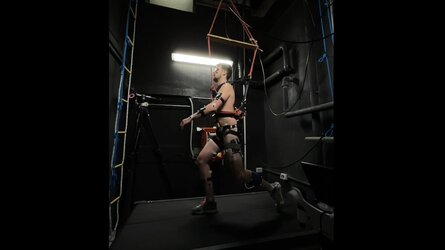Accept all cookies Accept only essential cookies See our Cookie Notice

About ESA
The European Space Agency (ESA) is Europe’s gateway to space. Its mission is to shape the development of Europe’s space capability and ensure that investment in space continues to deliver benefits to the citizens of Europe and the world.
Highlights
ESA - United space in Europe
This is ESA ESA facts Member States & Cooperating States Funding Director General Top management For Member State Delegations European vision European Space Policy ESA & EU Space Councils Responsibility & Sustainability Annual Report Calendar of meetings Corporate newsEstablishments & sites
ESA Headquarters ESA ESTEC ESA ESOC ESA ESRIN ESA EAC ESA ESAC Europe's Spaceport ESA ESEC ESA ECSAT Brussels Office Washington OfficeWorking with ESA
Business with ESA ESA Commercialisation Gateway Law at ESA Careers Cyber resilience at ESA IT at ESA Newsroom Partnerships Merchandising Licence Education Open Space Innovation Platform Integrity and Reporting Administrative Tribunal Health and SafetyMore about ESA
History ESA Historical Archives Exhibitions Publications Art & Culture ESA Merchandise Kids Diversity ESA Brand CentreLatest
Space in Member States
Find out more about space activities in our 23 Member States, and understand how ESA works together with their national agencies, institutions and organisations.
Science & Exploration
Exploring our Solar System and unlocking the secrets of the Universe
Go to topicAstronauts
Missions
Juice Euclid Webb Solar Orbiter BepiColombo Gaia ExoMars Cheops Exoplanet missions More missionsActivities
International Space Station Orion service module Gateway Concordia Caves & Pangaea BenefitsLatest
Space Safety
Protecting life and infrastructure on Earth and in orbit
Go to topicAsteroids
Asteroids and Planetary Defence Asteroid danger explained Flyeye telescope: asteroid detection Hera mission: asteroid deflection Near-Earth Object Coordination CentreSpace junk
About space debris Space debris by the numbers Space Environment Report In space refuelling, refurbishing and removingSafety from space
Clean Space ecodesign Zero Debris Technologies Space for Earth Supporting Sustainable DevelopmentLatest
Applications
Using space to benefit citizens and meet future challenges on Earth
Go to topicObserving the Earth
Observing the Earth Future EO Copernicus Meteorology Space for our climate Satellite missionsCommercialisation
ESA Commercialisation Gateway Open Space Innovation Platform Business Incubation ESA Space SolutionsLatest
Enabling & Support
Making space accessible and developing the technologies for the future
Go to topicBuilding missions
Space Engineering and Technology Test centre Laboratories Concurrent Design Facility Preparing for the future Shaping the Future Discovery and Preparation Advanced Concepts TeamSpace transportation
Space Transportation Ariane Vega Space Rider Future space transportation Boost! Europe's Spaceport Launches from Europe's Spaceport from 2012Latest

Lunar bounce
Thank you for liking
You have already liked this page, you can only like it once!
Get ready to bounce. Bouncing around on the Moon not only sounds like a lot of fun, but it could also be good for astronaut's muscles, bones and the cardiorespiratory system.
The "Movement in Low gravity environments" (MoLo) programme from ESA’s space medicine team at the European Astronaut Centre (EAC) in Cologne, Germany, aims to test movements in simulated reduced gravity, called hypogravity, on Earth.
This picture shows the first data collection stage of the MoLo study. A 17-metres refurbished ventilation shaft in ESA’s ground based facility “Locomotion On Other Planets” in Milan, Italy, is fitted with a bungee rope suspension system, which allows 6-metres high jumps to be performed. The study team consisting of experts from EAC, the German Sport University in Cologne, the Aachen University of Applied Sciences in Germany, the University of Bath in the UK and the University of Milan in Italy in addition to the German Aerospace Center DLR in Cologne, Germany, is evaluating the movement and balance of each test subject as they jump and perform various other forms of locomotion.
The small blue devices on the participant’s legs are electromyography (EMG) sensors used to measure muscle activity. The grey reflective markers placed on the test subject’s body allow for a full 3D motion analysis to reconstruct the participant’s body in software and analyse their movements.
The next step of the study will happen during a parabolic flight, a flight manoeuvre simulating lunar and Mars-like gravity. During the rollercoaster flight all body parts are affected equally, allowing the team to study the effects of hypogravity on human balance.
If the study reveals that balance is impaired due to reduced gravity levels, the findings will help provide insights that could be used to define effective countermeasure systems to prevent falls and balance problems on the lunar and Martian surfaces.
In a future step, the MoLo study team seeks to also test if hopping can be performed on the International Space Station where loading applied to the body is around 70% of that on Earth.
Hopping could be an additional and effective simple exercise to help astronauts mitigate or prevent deconditioning of muscles and bones that occurs when mechanical forces acting on the human body are reduced when living and working in space.
It could also provide an important aerobic exercise without the need for additional equipment even though astronauts will walk around on the lunar surface during Moonwalks as part of their normal daily tasks.
For further testing on Earth, the MoLo team is involved in developing a system for the ESA-DLR LUNA facility with a vertical suspension system that can suspend two people simultaneously and simulate a moonwalk under simulated hypogravity conditions.
With this pioneering project, the team is looking forward to expanding and pooling knowledge on the effects of hypogravity on the human body to prepare astronauts for future planetary exploration missions.
-
CREDIT
ESA -
LICENCE
ESA Standard Licence

Bouncing for the Moon

Lunar bounce - video 2

Lunar bounce - video 3

Lunar bounce - video 1















 Germany
Germany
 Austria
Austria
 Belgium
Belgium
 Denmark
Denmark
 Spain
Spain
 Estonia
Estonia
 Finland
Finland
 France
France
 Greece
Greece
 Hungary
Hungary
 Ireland
Ireland
 Italy
Italy
 Luxembourg
Luxembourg
 Norway
Norway
 The Netherlands
The Netherlands
 Poland
Poland
 Portugal
Portugal
 Czechia
Czechia
 Romania
Romania
 United Kingdom
United Kingdom
 Slovenia
Slovenia
 Sweden
Sweden
 Switzerland
Switzerland






















